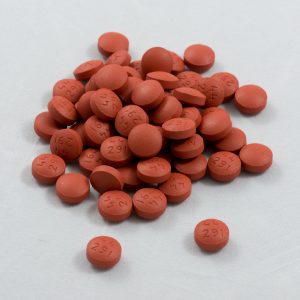Most athletes have heard the term, “no pain, no gain” at one point or another in their athletic careers, but this saying is truer than one might think. Having grown up in a household where sports were played year round, it was common to take over the counter non-steroidal anti-inflammatory drugs (OTC NSAIDs), such as ibuprofen or aspirin to ease the pain. Ran too far? Easy solution, take some Advil. Overdo it with the lifting? Take a few Motrin and you’ll be ready in the morning. It was even common to take these over the counter drugs before a workout, as a way to get a head start on the pain.
Is there any validity to this solution? OTC NSAID’s are known for their ability to reduce fevers and minor aches and pains. With that being said, are they really useful for exercise related injuries or pains? Specifically, are they safe and effective to use for delayed onset muscle soreness (DOMS) due to exercise?
DOMS is the pain and stiffness that is felt typically between 24 and 72 hours after the workout has been completed but can last up to 7 days. After a strenuous workout, the body responds with acute inflammation as a natural way to heal the body. This inflammation usually goes hand in hand with DOMS, but the specifics of this relationship have not been clearly defined. Many athletes try to combat this by taking ibuprofen (or other OTC NSAIDs) to ease the pain, but recent studies have shown that this isn’t necessarily a foolproof plan.
In a 2006 study completed by Nieman et al., the influence of ibuprofen was measured during the 160-km Western States Endurance Run on endotoxemia (the presence of endotoxins in the blood), inflammation and plasma cytokines. The study included 29 ultramarathoners who consumed 600 and 1200mg ibuprofen the day before and on the race day, respectively, and 25 controls that competed in the race but did not take ibuprofen or any other medications. Blood and urine samples were collected the morning prior to and immediately following the race, and subjects recorded muscle soreness during the week following the race using a 10-point Likert scale. It was found that ibuprofen use compared to non-users did not alter muscle soreness or damage. In addition ibuprofen use was linked to elevated indicators of endotoxemia and inflammation. One limitation of the study was that it did not have a placebo group due to ethical concerns from the race director, but they may have had an impact on the results. In addition, race conditions are not the best conditions to conduct an experiment under, as they can cause extra stress on the body, affecting the results.
In another study conducted by Donnelly et al., 32 volunteers participated in a study in which ibuprofen was tested against an identical placebo for its effectiveness in reducing muscle soreness and damage after two periods of downhill running. Volunteers took two 600mg ibuprofen or placebo tablets 30 minutes before each run, and took one 600mg tablet every six hours up to 72 hours post-exercise. Blood samples were drawn pre- and post-exercise, and at 6, 24, 48 and 72 hours and analyzed for indicators of muscle damage and inflammation. A questionnaire was used to determine muscle soreness for different regions of the body (the results can be seen in Table 1). The results indicated that ibuprofen is not an appropriate treatment for DOMS and muscle damage. However, one limitation of this study was that during the 10 week break between the two periods of running, there was no monitoring or control of the participants, which means their lifestyles could have been very different from each other, thereby affecting the results.
Furthermore, it is known that exhaustive physical activity leads to small intestinal injury and short-term loss of gut barrier function in otherwise healthy individuals. Another study, conducted in 2012 reveals that ibuprofen aggravates this exercise-induced small intestinal injury and induces gut barrier dysfunction in healthy individuals.
Based on this research, I have concluded that OTC NSAIDs should be discouraged as a way to mitigate the pain that comes with delayed onset muscle soreness. The data from the first two studies show that ibuprofen (and implied other NSAIDs) are not a satisfactory way to decrease the pain that comes from delayed onset muscle soreness. The third study shows that ibuprofen can be extremely harmful to the user and therefore should not be taken if it can be avoided. Based on this information, not only should OTC NSAIDs not be taken for DOMS, but the relationship between inflammation and DOMS should be more thoroughly investigated. It could be that the inflammation isn’t causing DOMS and that is why the drugs aren’t relieving the pain. However, the first study suggests that the intake of ibuprofen increased inflammation, the exact opposite of what it was supposed to do. Either way, ibuprofen and other NSAIDs should not be taken for relief from DOMS.
Questions to consider:
Do you take OTC NSAIDs such as ibuprofen or Advil when you are feeling sore after a hard workout? Do they help? Will you continue?
How often do you think people who exercise regularly take OTC NSAIDs? Should this change?
What may be an alternative to taking NSAIDs for muscle soreness?
Do you still think it is safe to take NSAIDs for other types of pain, such as menstrual cramps, headaches or fevers?
Further Reading:
Last year’s blog post discussing at delayed recovery after exercise due to NSAIDs


